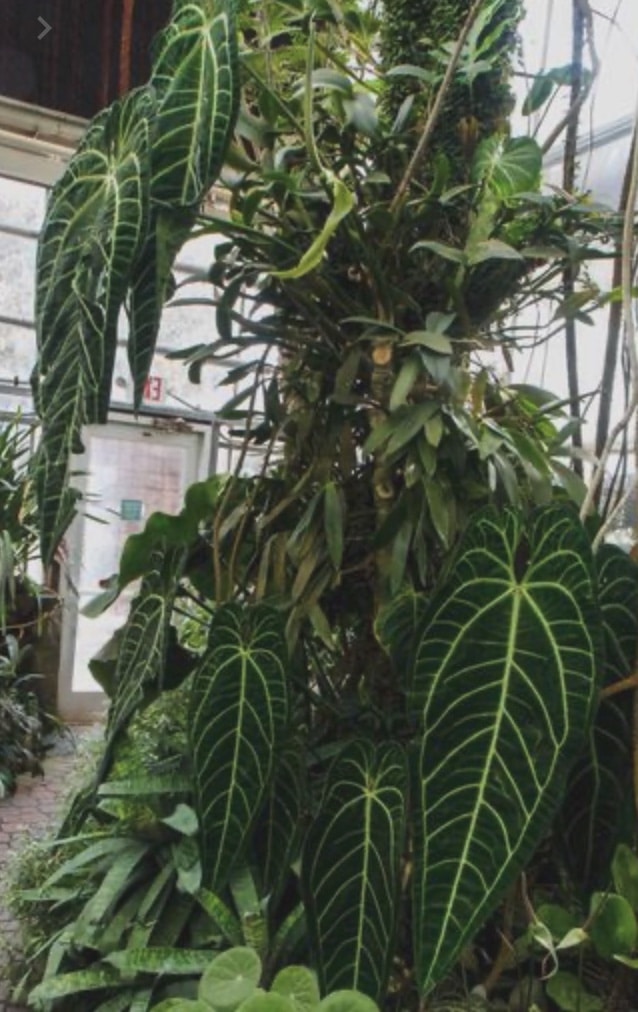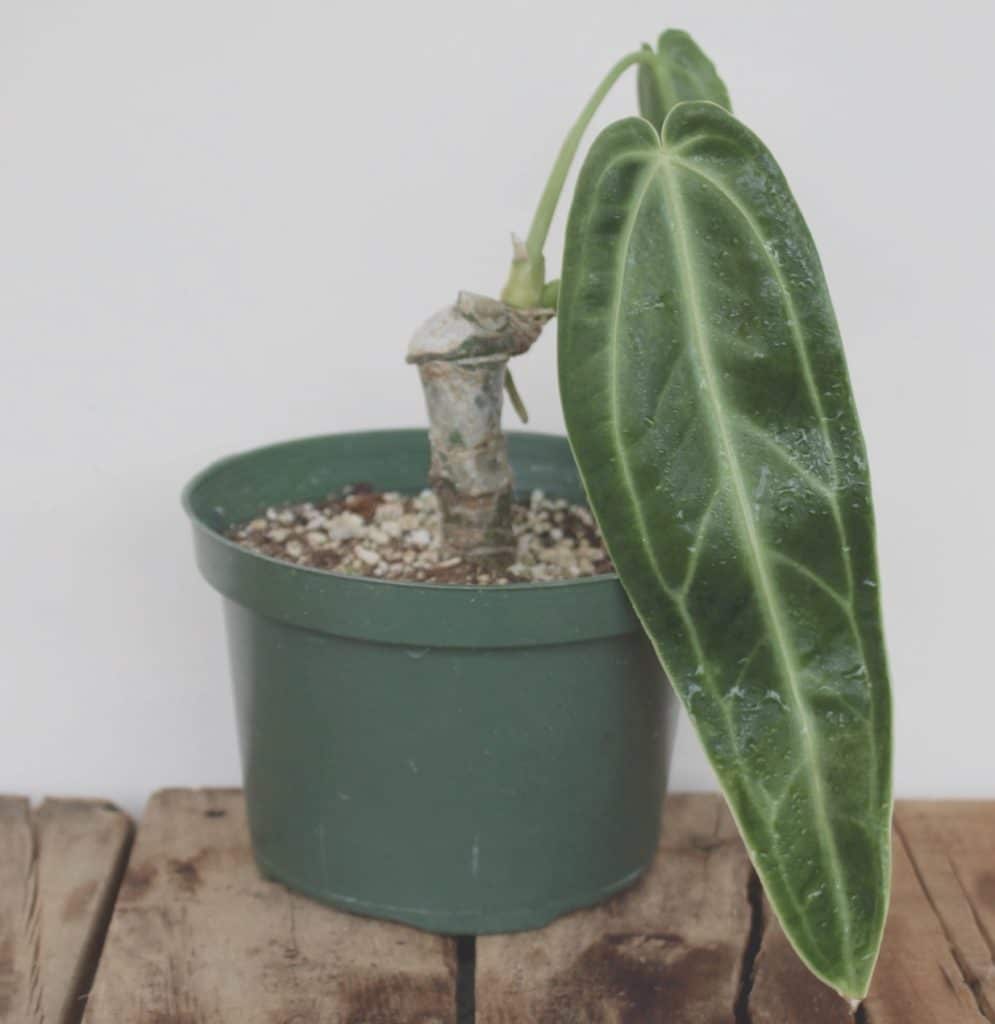The Anthurium Warocqueanum is a Latin name meaning empress of the jungle. This unique plant comes from the Araceae family and is native to Columbia. It requires some specialist care and shouldn’t be neglected. The plant is commonly referred to as the Queen Anthurium. Let’s look at how to care for this lovely houseplant.
What is a Anthurium Warocqueanum?

The Anthurium Warocqueanum is an air plant or epiphyte which attaches itself to other shrubs and trees. It has attractive foliage, is fast-growing, and can reach six ft tall by maturity. This plant has leaves that are dark green in color and have a leathery texture. The leaves also have silver veins which become more visible as the plant ages.
In the wild of Columbia, examples of this species have been found with leaves that measure a staggering 4 ft.
How to Care for an Anthurium Warocqueanum?
The queen Anthurium requires some special care to thrive. Here are some top tips to help you grow a healthy plant:
Soil
The soil your plant grows in is crucial to its health as it helps the plant absorb water and nutrients and breathe. Queen Anthurium plants thrive in soil that has a good air supply and is well-drained. You can make the soil from a mixture of ingredients, including bark, charcoal, houseplant soil, and fern or moss fiber.
Avoid using soil that is too dense. Adding charcoal to the ground is very beneficial as it helps with airflow and also protects the plant’s roots from bacteria and eliminates nasty odors. Fern fiber can be used to add moisture to the soil.
Humidity
In their natural environment, the queen Anthurium is exposed to high humidity levels, which will be impossible to recreate in your home. These plants can acclimatize reasonably well and can live in less humid conditions, which means there’s no need to go out and buy a humidifier. It’s the balance between temperature and humidity that’s important. Queen Anthuriums should be grown in temperatures of between 20C and 25C.
Watering
The queen Anthurium requires a regular watering schedule as these plants don’t like to be soaked and shouldn’t be left to dry out completely. It’s best to provide your plant with a small amount of water frequently. You can water your plant three times weekly during the growing season and once a week in the fall and winter.
If you neglect your plant and the soil dries out, it will start to absorb water from the leaves. This will weaken the plant and affect its health.
Sunlight
The Anthurium Warocqueanum is a sun-loving plant that will naturally grow towards the light. However, it shouldn’t be left in direct sunlight. Optimal sunlight condition for the queen Anthurium is bright light but indirect sun. If this plant is left in the full sun for too long, its leaves will burn.
Fertilizer
The queen Anthurium requires phosphorous, nitrogen, and potassium to thrive. You can provide your plant with a natural fertilizer that contains these nutrients, such as rice water. Alternatively, you can buy a slow-realizing fertilizer and follow the instructions on the label. It’s best to give the queen Anthurium fertilizer once a week. Don’t neglect your plant’s nutritional needs as they aren’t as forgiving as many houseplant species.
Queen Anthurium: Common Problems
The most common problem suffered by the queen Anthurium is that their leaves turn yellow and start to drop off. This indicates that the plant isn’t being cared for correctly. There are many reasons for yellowing leaves, including overwatering leading to root rot or under-watering. Direct sunlight can also affect the color of the leaves. You may need to adjust the care you’re providing for your plant if its leaves have started to turn yellow.
Here are some of the most common problems suffered by a queen Anthurium.
Root issues
If you overwater your queen Anthurium, it will be prone to root issues that will cause the plant to wither. In the worst cases, plants that have been overwatered are turning yellow and withering have root rot. This is likely to be the case if the plant doesn’t recover even you’ve made some changes to its watering routine and to other factors in the environment such as the temperature, light, or humidity. If the roots have started to rot, there isn’t much you can do for your plant, and it may eventually die.
It’s a good idea to inspect your plant’s roots if something isn’t right. You can cut off any roots that look infected or are either mushy or dry. Often unhealthy roots will turn black. After removing part of the root, you may like to repot your plant using a new soil mix. This will ensure that any infections present in the soil are eliminated.
Pests
Queen Anthurium generally isn’t that affected by insect pests. However, they are more likely to be affected if you have other house plants in close proximity. Your queen Anthurium won’t be immune to pests such as spider mites, scales, or mealybugs. If you notice any insects, try to control them before they breed and your plants become infested.
Spider mites will leave a web-like film over plants while other insects leave sticky transparent fluids in their wake. You can use an insecticide to get rid of pests, or if you’re searching for a more natural solution, neem oil works wonders. Alternatively, use a cotton ball that is coated with 70% alcohol to wipe the leaves, as this will destroy any insects or eggs.
Conclusion
The Queen Anthurium is a beautiful plant that is fast-growing and looks impressive. It grows in the wilds of Columbia and is one of the more demanding species of Anthurium plants.
However, once you develop an effective care routine that includes regular watering, fertilization, the right soil, and temperature levels, your plant will thrive. This lovely tropical plant will enrich your home.
You may also enjoy reading:
